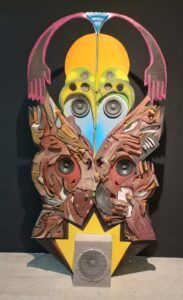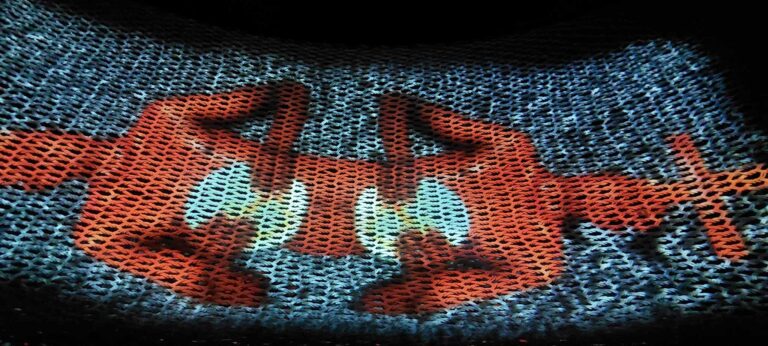The art year in review: The National Gallery of Jamaica Part 1

Internationally, 2022 has been a fantastic year for the artists of the global Caribbean, with an unprecedented number of high-profile exhibitions, commissions and awards. On the local front the story for 2022 is much shorter, and far less exhilarating, certainly where our public cultural institutions are concerned. I will provide a critical overview of key developments relevant to Jamaican and Caribbean Art in a series of year-in-review columns, starting with the local picture.
The National Gallery of Jamaica (NGJ) warrants special attention here, as the institution has, arguably, been in a crisis with a significantly reduced level of activity but is of crucial importance to the health of Jamaica’s artistic ecology, as the country’s national art museum. While there have been plans for private art museums in Jamaica, none have, as yet, materialized, so the NGJ is also the country’s only art museum, which raises the stakes significantly, as there are no local alternatives in the museum representation of Jamaican art. As a public institution, funded with taxpayers’ dollars, the NGJ is accountable to the Jamaican public and its specialist stakeholders in ways that no private museum would be. It is time that we take that accountability seriously.
At the start of the year 2022, the NGJ had on view the Jamaica Jamaica! exhibition, a touring exhibition on Jamaican music history which had opened there before the pandemic lockdown started in 2020. While this exhibition had only been open to the public for a month, and may not have reached its full potential, in terms of impact and viewership, the fact that the NGJ pretty much reopened “as it was” in October 2021, extending Jamaica Jamaica! for another five months, raises questions about what was done during the eighteen months the NGJ had been closed to the public, as the time could have been used to refurbish the building, to finish reinstalling the permanent exhibitions, and to develop exciting new exhibitions and programmes. Only one related educational programme – a panel discussion on music video production in Jamaica – was held, on 24 February.

Matthew McCarthy, Sun System Radio, in the Kingston Biennial at the National Gallery of Jamaica
On 8 April the NGJ confirmed the list of artists for the long-awaited and repeatedly postponed Kingston Biennial and announced the opening date as 26 June 2022. The Biennial was guest-curated by David Scott, Wayne Modest, and Nicole Smythe-Johnson, three well-respected Jamaican-born academics and curators, and important critical voices in the field of Caribbean culture, with the NGJ Chief Curator O’Neil Lawrence. The selected theme was Pressure, which has significant cultural currency in Jamaica and in the present moment. Twenty-four artists participated, with a combination of older pieces and work that was created for the exhibition. The artists were: Hurvin Anderson, Greg Bailey, Simon Benjamin, Alicia Brown, Camille Chedda, Robin Clare, Katrina Coombs, Kaleb D’Aguilar, Ricardo Edwards, Laura Facey, Monique Gilpin, Nadine Hall, Satch Hoyt, Christopher Irons, Marlon James, Leasho Johnson, Matthew McCarthy, Arthur Simms, Roberta Stoddart, Jasmine Thomas-Girvan, Phillip Thomas, Omari Ra, Oneika Russell, and Nari Ward. The curators and artists were all Jamaican, either based on the island or in the diaspora. A catalogue, with essays by the curators and other contributors was also published.
While the exhibition was of a high standard and engaging, it was not what could and should have been. There were no surprises in the selections, which reflected what is an already established canon of contemporary, nor was there any real depth or critical vigour to the exploration of the theme. Limited to the ground floor of the NGJ, and to Jamaican artists only, the exhibition was also significantly smaller in scope, ambition and local public engagement than the preceding Jamaica Biennials. We ought not to blame the curators for this underwhelming start of a rebranded biennial which was launched with significant fanfare and ambition, as the exhibition appears to have been hamstrung by behind-the-scenes politics.
The Kingston Biennial’s social media campaign had actually started on a promising note with attractively designed short features on each participating artist, with a quote regarding that artist’s interpretation of the Pressure theme. After an energetic flurry of near-daily posts, the social media campaign quickly ran out of steam, however, and was succeeded by tedious notices about the various notables, many of them Jamaican and visiting political figures, who came to see the biennial on official tours, along with the obligatory posed photographs in which the NGJ’s principals also prominently feature. This shift in the focus of the Biennial communications, away from the exhibition itself, which has also been evident on other occasions, suggests that the current leadership increasingly views the role of the institution in political and diplomatic terms, rather than in terms of its public cultural and educational mandate.
Likewise, the accompanying programme started with two panel discussions with some of the participating artists on the day after the opening, with promises of more such public engagement opportunities to come. There were, however, no other programmes that facilitated such critical engagement with the artists and the exhibition itself, although a few other events were held. A Jamaican film series, guest-curated by Storm Saulter and broadly related to the “pressure” theme, was launched as an adjunct programmed, which was as such commendable, as film needs to be part of that conversation. The series was, quite oddly, held at the AC Hotel, rather than at the NGJ itself, which was a missed opportunity to bring local audiences to the Biennial, and downtown Kingston, and to explore the connections between the selected films and the exhibition theme in a more relevant environment. One of the participating artists, Laura Facey, also staged a performance with Melda Darling and the St Ann Senior Citizens Cultural Group around her Guiding Their Way Home installation on 29 November.
The NGJ’s efforts should perhaps have been spent on re-imagining its Last Sundays programme, with free Sunday events to animate the Biennial, and on introducing the long overdue regular Sunday opening hours. The Last Sundays programme had been cancelled earlier in the year, apparently because of budgetary constraints, and with it, an important tool for engaging new (local) audiences was squandered. Surely, it ought to be possible to get a long-term corporate sponsorship commitment for such an important initiative, as many museums abroad have done.
The NGJ Education Department did reintroduce its Writivity programme in August, a free, three-day annual workshop which was introduced in 2015 to assist CSEC Visual Arts students with their journaling task. The 2022 edition appears to have been a success, so it is not that the Education team is unable to develop and sustain quality programming.
Part 2 of this review will be published in next week’s edition.
Dr Veerle Poupeye is an art historian specialized in art from the Caribbean. She works as an independent curator, writer, researcher, and cultural consultant. The second, revised and expanded edition of her best-known book “Caribbean Art” was recently published in the World of Art series of Thames and Hudson. Her personal blog can be found at veerlepoupeye.com.






